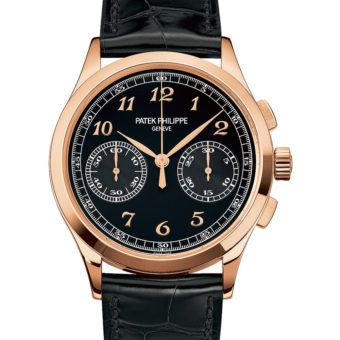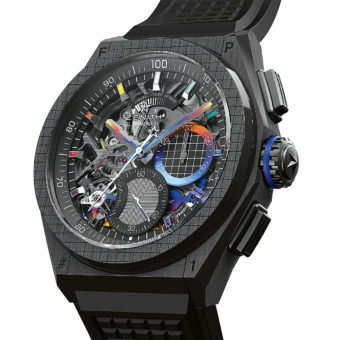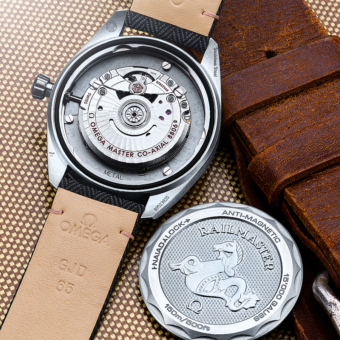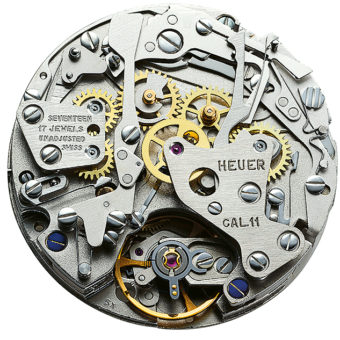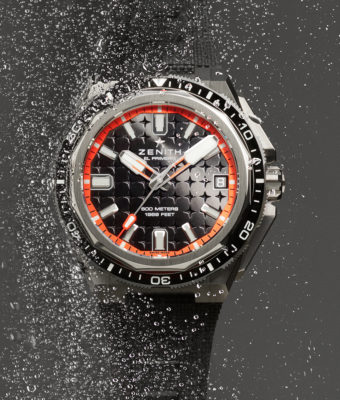This article was originally published in the September/October 2022 Issue of the WatchTime print magazine, before Aaron Rodgers’ 2023 move to the Jets.
Aaron Charles Rodgers (born Dec. 2, 1983) is a quarterback for the Green Bay Packers of the National Football League (NFL). He has been a brand ambassador for Swiss watchmaker Zenith since January 2021. Rodgers is the second player ever to win four MVPs (NFL’s Most Valuable Player), and is a four-time winner of the Best NFL Player ESPY Award. He has the best touchdown-to-interception ratio in NFL history at 4.83, holds the league’s lowest career interception percentage at 1.3 percent and the highest single-season-passer rating record of 122.5. Unsurprisingly, Rodgers is considered to be one of the greatest and most talented quarterbacks of all time and led the Packers to win Super Bowl XLV, completing 24 of 39 pass attempts for 304 yards and three touchdowns and zero interceptions.
WatchTime met Rodgers during his first visit to the Zenith manufacture in Le Locle to talk about precision, goals and his passion for watches.
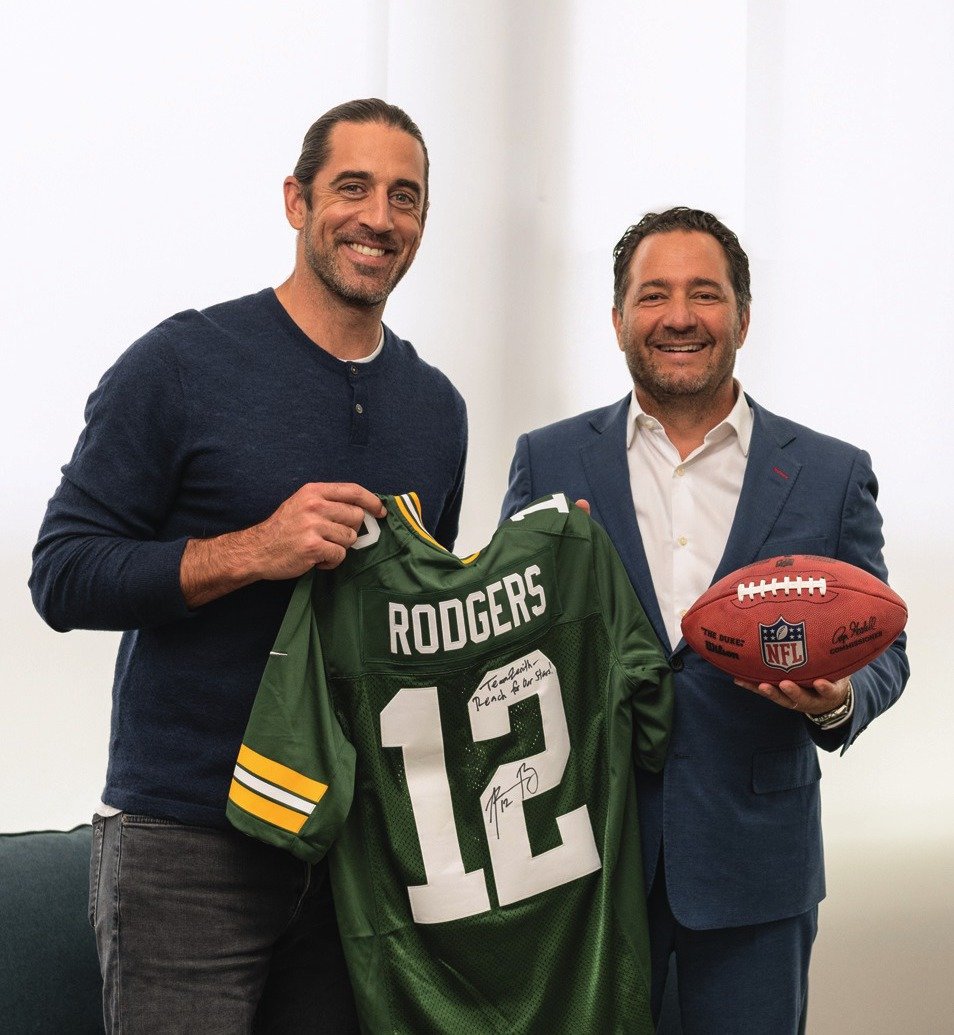
WT: What attracted you to join team Zenith in the first place?
AR: I always wanted to work with a Swiss watch company, and Zenith’s story was really interesting to me, like, for example, how they were making components for Rolex. I just found that really fascinating, because it’s just one of those things about watches you wouldn’t think about or know or question who’s making the timepieces. When I read that story, I was like, ‘There must be something to this.’ And then reading the story about one guy who basically saved the company by hiding a bunch of the tools to make the chronograph [movement], I thought was really interesting. And just the precise nature of the watches. When I got to meet Julien [Tornare], especially, I just enjoyed his personality and kind of how he looked at the business and treated people, creating an environment that was collaborative. I think when you endorse a product, just like when you invest in a product, you’re investing, not just in a product, but you’re investing or endorsing people. And I like the people.
WT: This was your firstmanufacturevisit in Le Locle. What were your impressions?
AR: I was watching [the watchmakers]. It’s pretty incredible how tiny those pieces are and the preciseness; they’ve got to get them on there. I think there is something therapeutic about it, almost meditational. I saw a lot of people with headsets. It takes a special type of person, you’ve got to be an artist doing this the whole day. And, the thing I learned today was, it’s never going to be fully automated. In the end, it takes that human ability to make adjustments and figure out a way to make it just right. I think there’s something special about that in an ever-increasing automated world where robots are going to take over at some point. There is such a human element to the watchmaking process, that I didn’t quite understand.
One thing that hit me, because I’m such a math person, I was looking at this one specific piece of paper, and it had these numbers and a range on it. And I was asking what these numbers were, relating to this micro piece of the watch, right? One of 300-plus pieces of the watch. And I said, ‘What is this in relation to?’ And he said, ‘That’s the standard deviation allowed on these specific, tiny parts,’ that they do to allow for a variation up to a certain number of microns, or whatever. I thought that was really fascinating, that they allow for a slight deviation in the parts, on certain parts. Now, at certain parts, there was like two microns was the deviation allowed. On others, it was up to like 10, and I was interested by that fact that there is so much difference in the way that the watches are made and the allowance for the human element to come in as it’s put together. And that some watchmakers have a stamp almost to where someone who’s been around the business for a long time and run around in this for a while, can actually look at certain watches and tell you who probably put that together. And I found that fact really fascinating, because I love the individuality of it. And the fact that there is so much human creativity that goes into each specific watch. That’s the first thing.
And the second is Charles Vermot. We were just talking about our love of books and biographies and just how one person can change the course of history by doing something daring or courageous, or in this case, what they thought was the right thing to do and not let this technology be thrown out or ruined or sold off or disappear. I found that to be rather fascinating that he decided to say, you know what, screw it. I’m going to come in at 9 o’clock at night and have my wife worrying about things and I’m going to hide this stuff away because I think at some point it’s really going to make a difference. And then in 1984, you got the opportunity to come back and be a part of doing something really special because of what he had done a decade and a half before. And I think that’s just a fascinating part of the history of Zenith that makes it such a unique company.
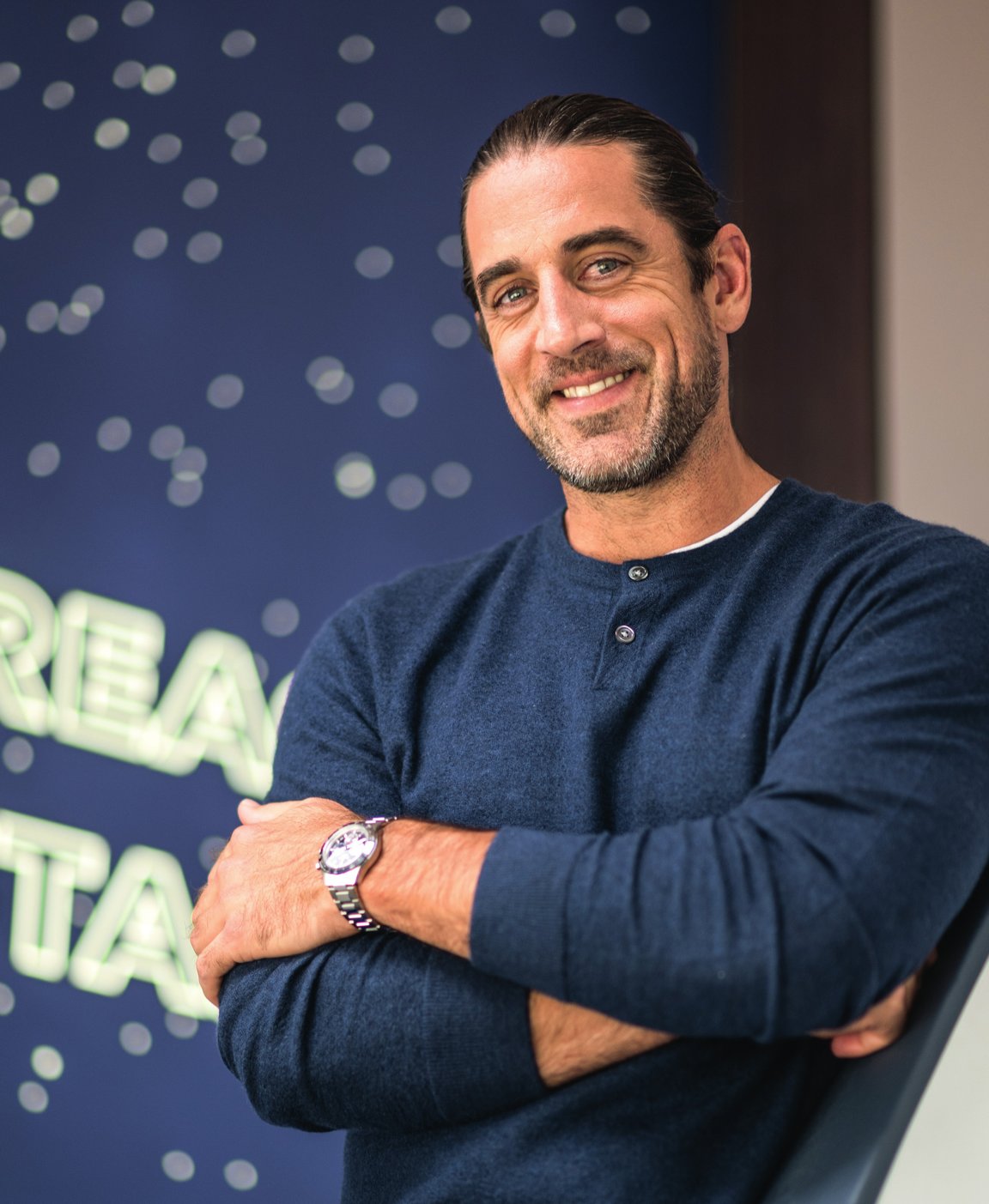
WT: Julien Tornare’s vision for the brand is summarized with the ‘Time to Reach Your Star’ philosophy. How does this align with your own values?
AR: Reaching your star is an acknowledgement that everything that you need to achieve success is inside you. I think that Zenith would say that about the brand, that the ability to expand the brand, grow the brand, involves a great understanding of the people there and the ability to make a product that’s at the top of the market. And for me, my success hinged on harnessing my own confidence in the player I could be inside and knowing that I didn’t have to go outside of myself or look elsewhere to achieve success. I just had to be the best version of myself. I think I just knew, deep down, I was always going to be good enough. That’s what I tell young kids who have dreams about playing sports at the highest level: it starts with a deep confidence in your own abilities and also, good perspective, an attitude of gratitude that allows you to stay present, and then not be thinking too much in the past or too much in the future.
And I think that’s what is cool about the brand is that they make a unique product, that is good enough, just how it is. And they don’t have to look outside of themselves to achieve success. They just have to believe that they have what it takes.

WT: That sounds like there are a lot of similarities.
AR: I mean, I think there’s a lot to be said about running a business, that is similar to playing quarterback. You’re the CEO of the football team. So, as far as Julien and I go, I think there’s a lot of understanding about what it takes to lead people and the fact that great leaders have to be authentic. They have to have a great pulse on the team and their workers, on the morale. And then, learning when to defer. You can’t always be the guy talking. You have to empower people around you to step up and to play a role and to contribute to the organization or the team.
And that’s one thing I think is really important. It’s about the culture. We talk about it a lot in Green Bay, but it’s same thing with Zenith. The culture is the people and having the perspective that I have, that I know Julien has, that just like Zenith has been around since 1865 in various forms, the Green Bay Packers have been around since 1919. They were around long before I got there. They’re going to be around long after I’m gone. And, I think Julien understands that as well. Zenith was around a long time before we got there. It’s going to keep on going when he’s done. But while he’s here? What kind of impact can he have on the brand, on the product, on the environment, on the people that can make a lasting impression and leave the brand better? Just like I want to leave the team in a better position than when I found it. I think he’s like me. He takes a lot of pride in making a difference and also what it means to lead people and to breed a culture of inclusion and cooperation and collaboration.
WT: You picked a Chronomaster Sport with a white dial. What made you choose this watch?
AR: I had a few options, but this was my favorite one. I’ve always enjoyed the shape of watches like this. I think watches can be for various occasions. There are watches that feel a little classier than other ones. There are ones that feel a little more casual. This one, I feel like, can kind of do both. But, honestly, it’s the aesthetic. It’s just a really pretty watch. I wear a lot of blacks and whites and grays, so it fits kind of my color palette that I’m usually wearing.

WT: How did you get interested in watches?
AR: There’s something to family heirlooms that I’ve always been attracted to because our family didn’t have any. We didn’t have anything we could pass down. My grandfather on my dad’s side fought in the Second World War. He had some possessions that were very important, and I believe my grandmother threw some of those out, which was crazy. But, there was never anything that we knew would be going to get passed down. I can’t tell you a specific moment that made the biggest impact on me, but I always wanted to have watches and jewelry and sentimental things that I could pass down to the next generation. So, I’ve had various watches over the years that were important to me. Some were ridiculous and gaudy. I had one with diamonds that I wore to the draft. I haven’t worn it in a long time, but it has a sentimental value and I’ll pass that on, I think, one day to my children. There’s a special heirloom nature to them, it has a story. And that story can last as long as the piece does.
WT: When do you take your watch off?
AR: When I walk into the locker room, I kind of have a process I go through. I’ll kind of go in, and the first thing I do is I get my pads down. I put my jersey over my pads, put my pads back on top of my locker. I get my pants out, put on my pads and my pants. I get my cleats out, set them out so they can get new cleats in them. Then I read the program, the game day program. And that’s about like 40 minutes since I’ve been at the stadium. And then I’ll start to get into my outfit and grab my smoothie and take my watch off and put it on the top of my locker. And then, we hopefully win. And then after the game, kind of reverse the process, shower, get dressed, and then put it back on, head out.
To learn more about Zenith, click here, and to subscribe to the WatchTime print magazine, click here.


